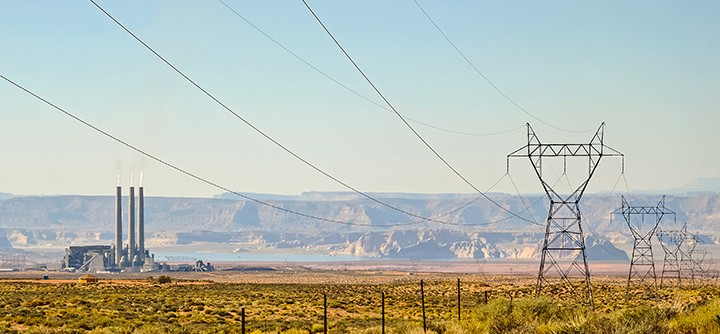How Heat Rates Impact Energy Power Prices

Have you ever wondered how electricity rates continue to rise when natural gas prices are at the lowest, they have been all year, and the cheapest renewable energy makes up nearly 50% of our resource mix on the Texas grid? Traditionally, fluctuations in electricity rates are driven by two primary factors, the cost of fuel and the heat rate, but given the complexities our grid faces today there is more to it than meets the eye.
So, what do we mean by heat rate? It is important to distinguish between a physical heat rate and the market implied heat rate when answering this question. A physical heat rate generally provides the market with the variable cost of power generation and is commonly used to indicate a power plants efficiency rating. Every generation resource has its own individual physical heat rate; for instance, wind and solar power has a different efficiency rating than a combined cycle natural gas power plant.
Heat Rate (MMBtu/MWh) = Thermal Energy In (MMBtu) / Electrical Energy Out (MWh)
Heat rate, as it pertains to physical power plants, can be thought of as the amount of fuel needed to produce one unit of output. Heat rates are stated in MMBtu/MWh, which tell us how much fuel energy (Btu – British Thermal Unit) of natural gas (or coal) it takes to generate 1MWh (Megawatt hour) of electricity. The lower the heat rate, the more efficient the plant rating for a particular plant. The heat rate allows the market to calculate the variable fuel generation cost of electricity. For example, if the cost of gas is $2/MMBtu and the heat rate of a combine cycle gas plant is 7 MMBtu/MWh then the variable fuel cost of generation is $14/MWh.
Fuel Cost $ / MMBtu x Heat Rate = Variable Cost of Generation
This is a very basic explanation, but it should be noted that other variable costs are tracked as well, like operating, maintenance, and emission allowances costs.
Understanding that physical heat rates and natural gas prices really do not jive with current market prices, when we speak of heat rates relative to electricity prices, we are referring to the market heat rate. The market implied heat rate is a financial metric driven by the availability or scarcity of the electricity supply relative to the load demand on the grid. As electricity becomes scarce and there’s less electricity available to serve demand, the heat rate curve goes up and electricity becomes more valuable, driving prices higher, much like we are experiencing today. Simply said, if electricity prices increase and natural gas prices remain the same, means that market implied heat rates have increased.
Electricity Price = (Market Implied Heat Rate x Fuel Cost) + Retail Adder
When we consider the combined resource-mix (power generation) available on the grid, there are many factors that can create a scarcity of power on any given day. For instance, thermal plants may have scheduled or unscheduled outages for maintenance etc., and/or weather conditions may not perform as forecasted that negatively impacts the output for renewable generation.
The resource mix in Texas today consists of the following:
| Natural Gas power 44% | Solar 14% |
| Coal & Lignite 10% | Wind 25% |
| Nuclear 3% | Batteries 4% |
| Thermal Generation 57% | Renewables 43% |
ERCOT Dashboard FEB 2024 – Monthly Capacity
There are many scenarios that impact the efficiency and reliability of the Texas grid, not the least being the accelerated retirement of thermal power plants, especially given the year over year increase in ERCOT load growth. As we increase the diversity of the resource mix, we should also consider these factors that influence the heat rate and cost of our electricity prices.
- Intermittency: Renewables are intermittent and are dependent on weather conditions. Their availability affects the overall system load and dispatchability of power, impacting the heat rate.
- Grid Stress and Reliability: Back up generation (often fossil fuels) may be needed to maintain the necessary operating reserve capacity when renewables are unavailable. This also affects the overall heat rate.
- Storage Solutions: Battery storage can mitigate intermittent renewable energy but adds costs and influences the heat rate as well.
- Grid Integration: Efficient grid management and smart integration of renewables play a crucial role in maintaining stable heat rates.
All things being considered, when fuel costs are low, as they are today, it is the market heat rates and the imbalance of supply and demand that keeps electricity prices high.
We expect grid and price volatility to continue in the market as we transition to a more efficient grid, but this will take time. However, managing intermittency with dispatchable generation and ensuring grid stability are essential factors to lower heat rates and strengthen the Texas grid, but we have not gotten there yet.
Acclaim Energy specializes in assisting organizations, helping cities, schools, hospital, manufacturing entities and other businesses optimize their energy portfolio, mitigate risks, and capture the best prices. For more information contact us at 713-524-0250 or you can visit our website at acclaimenergy.com.



